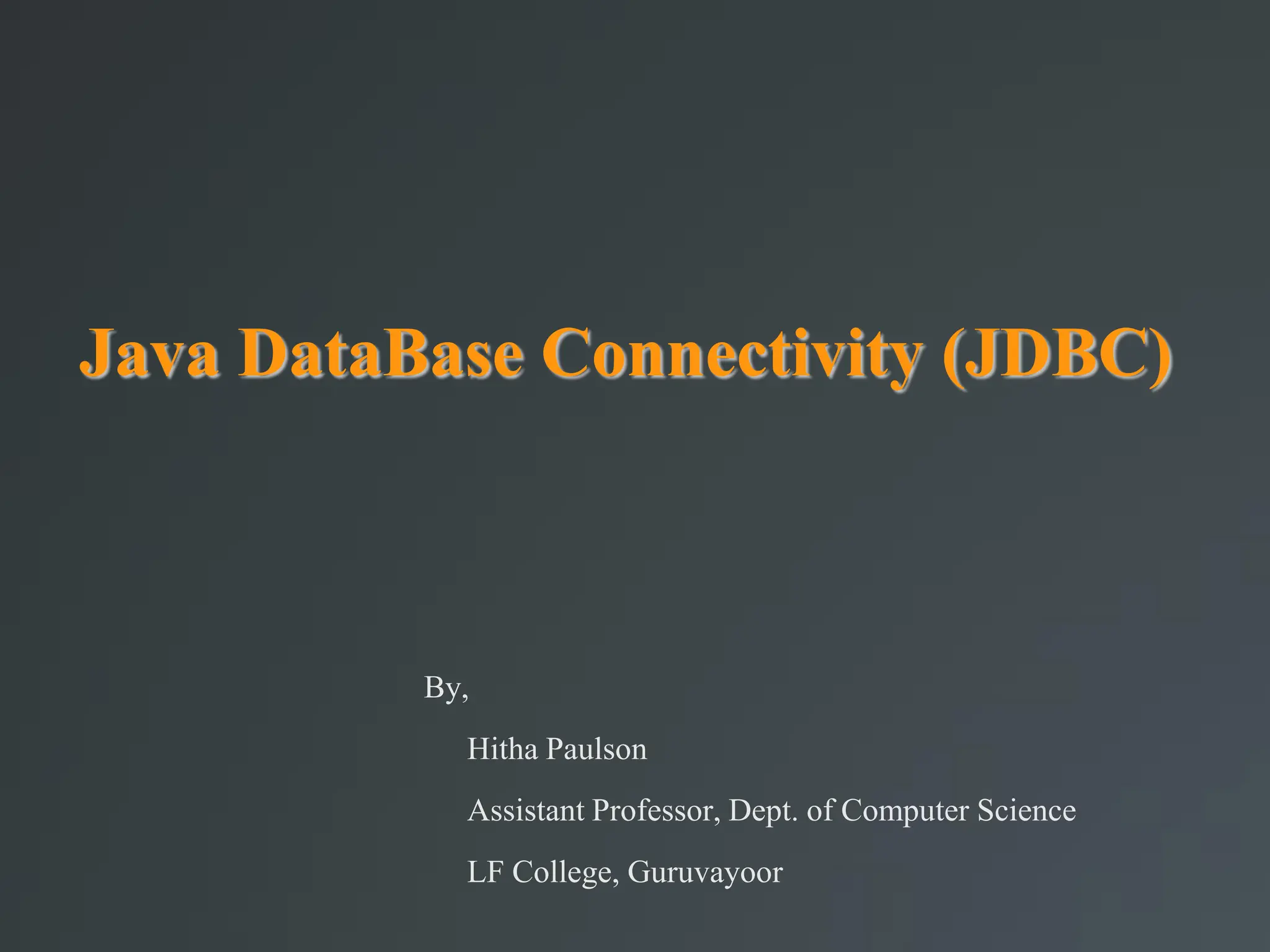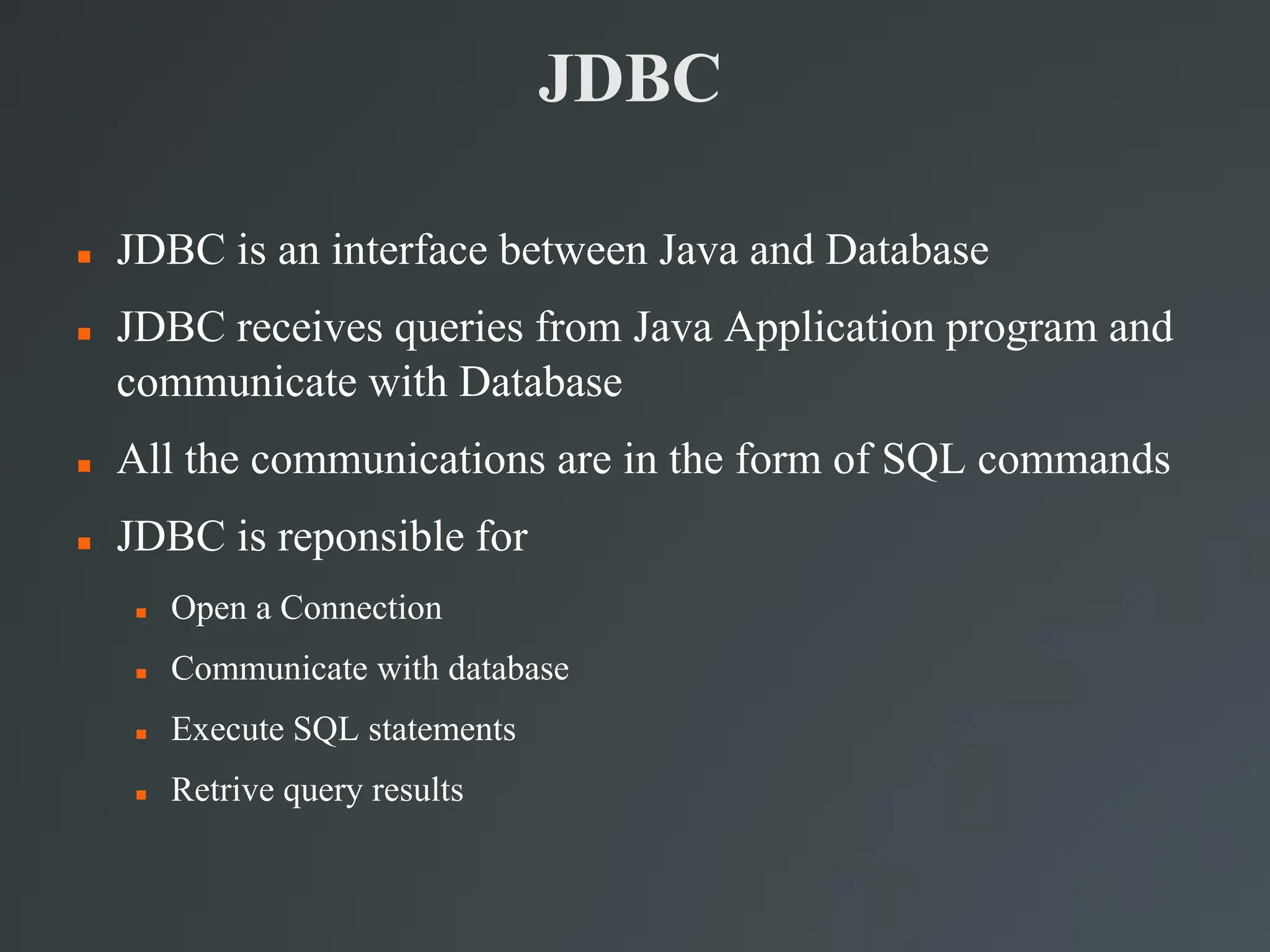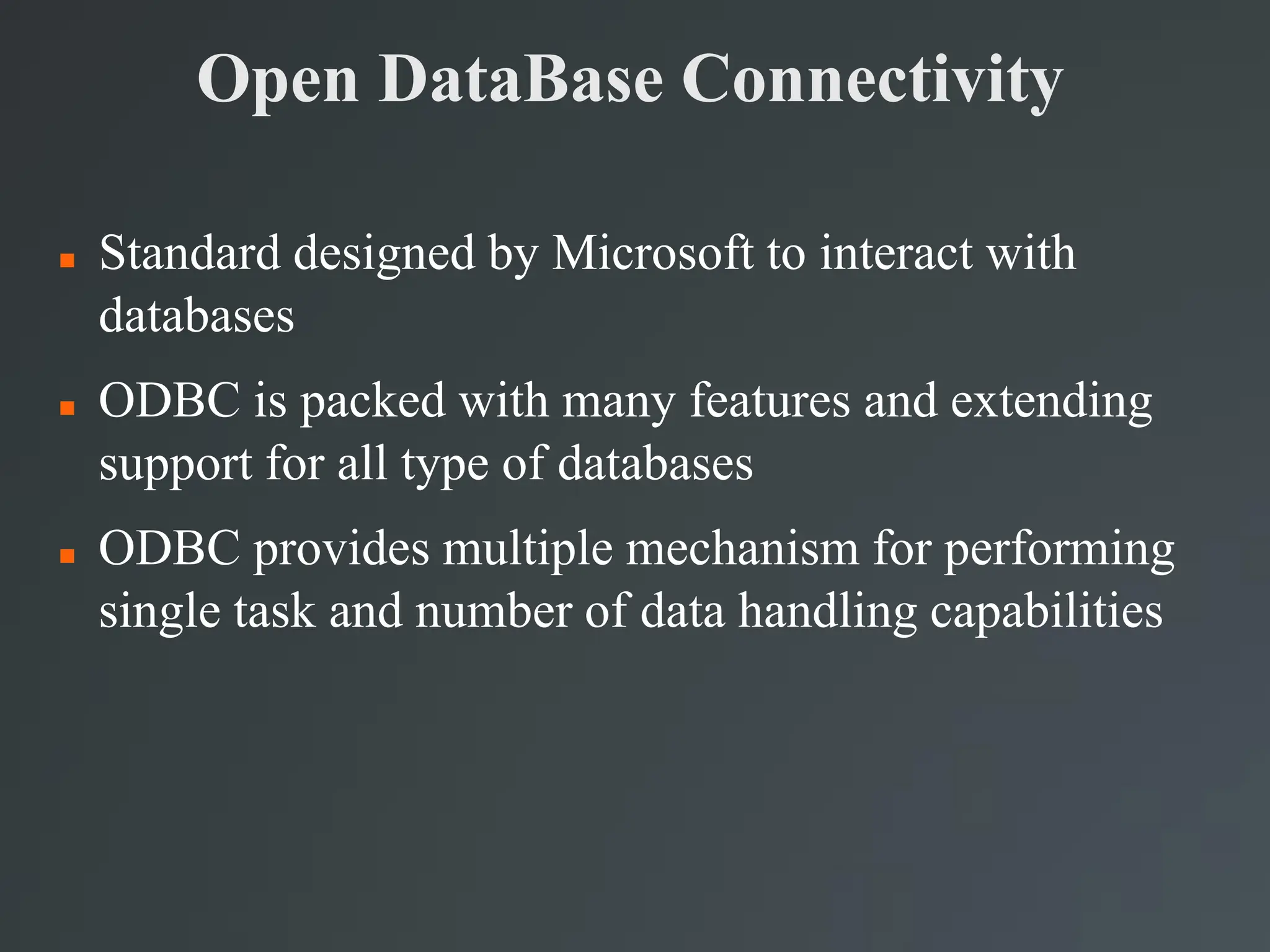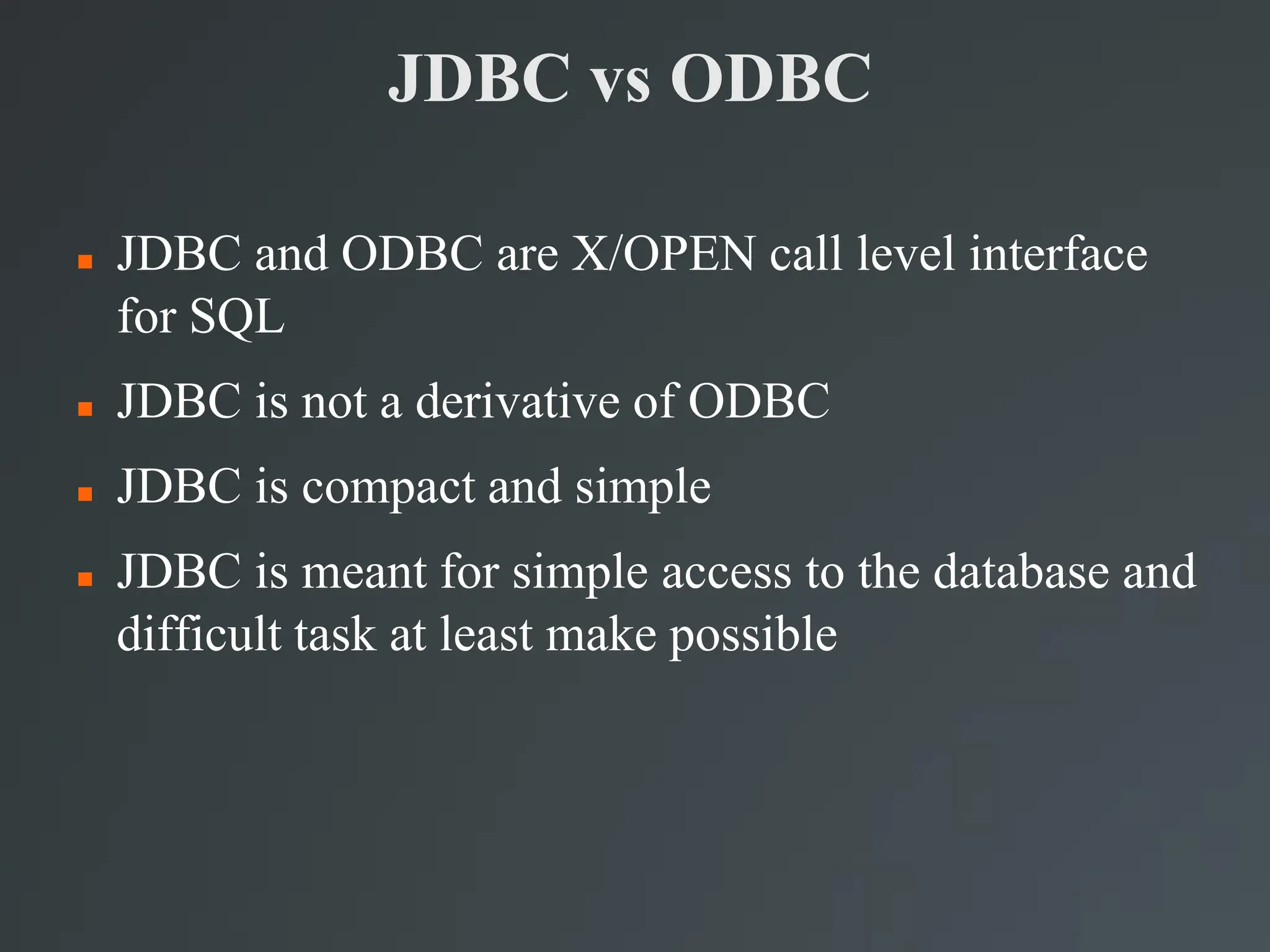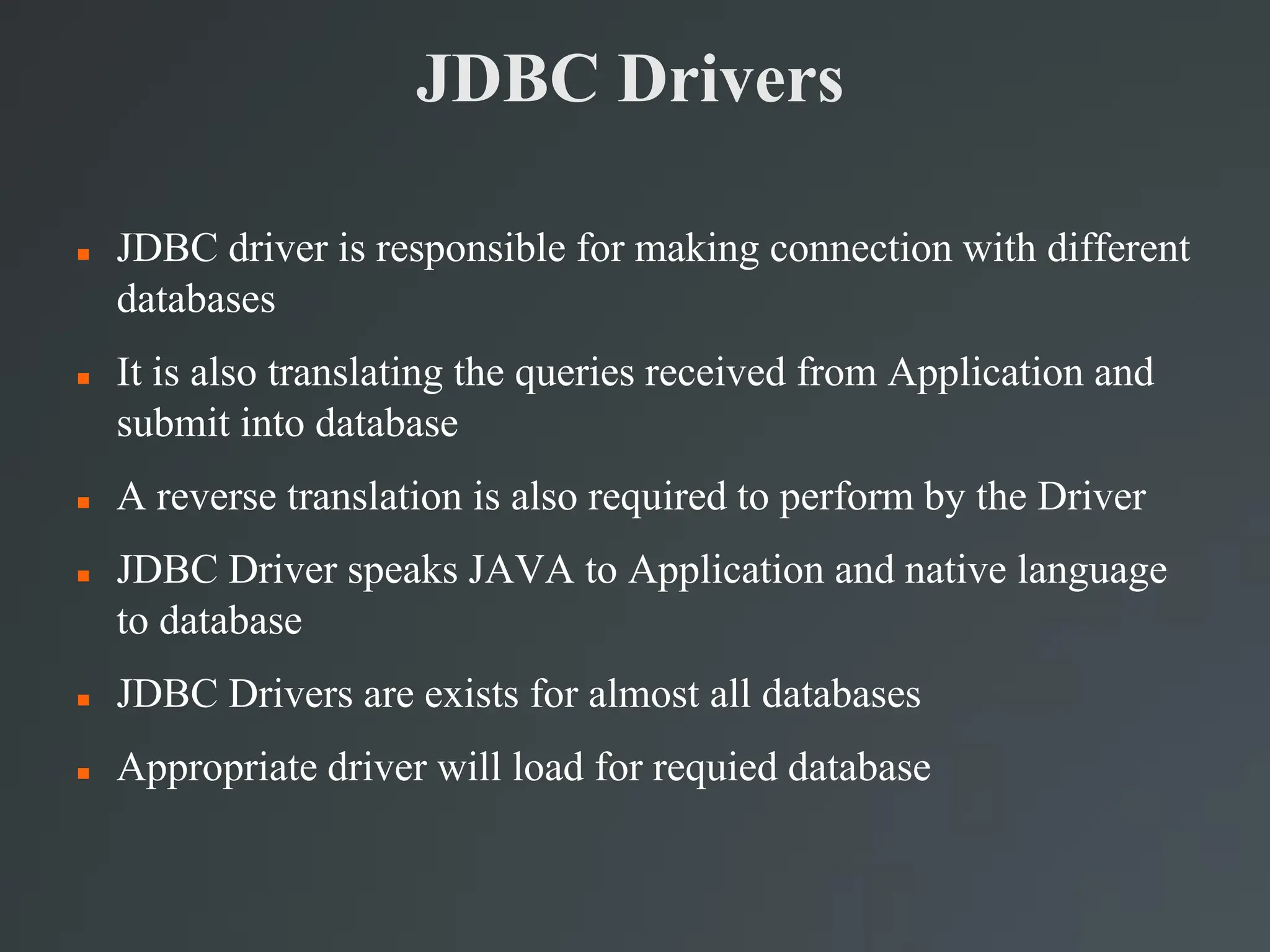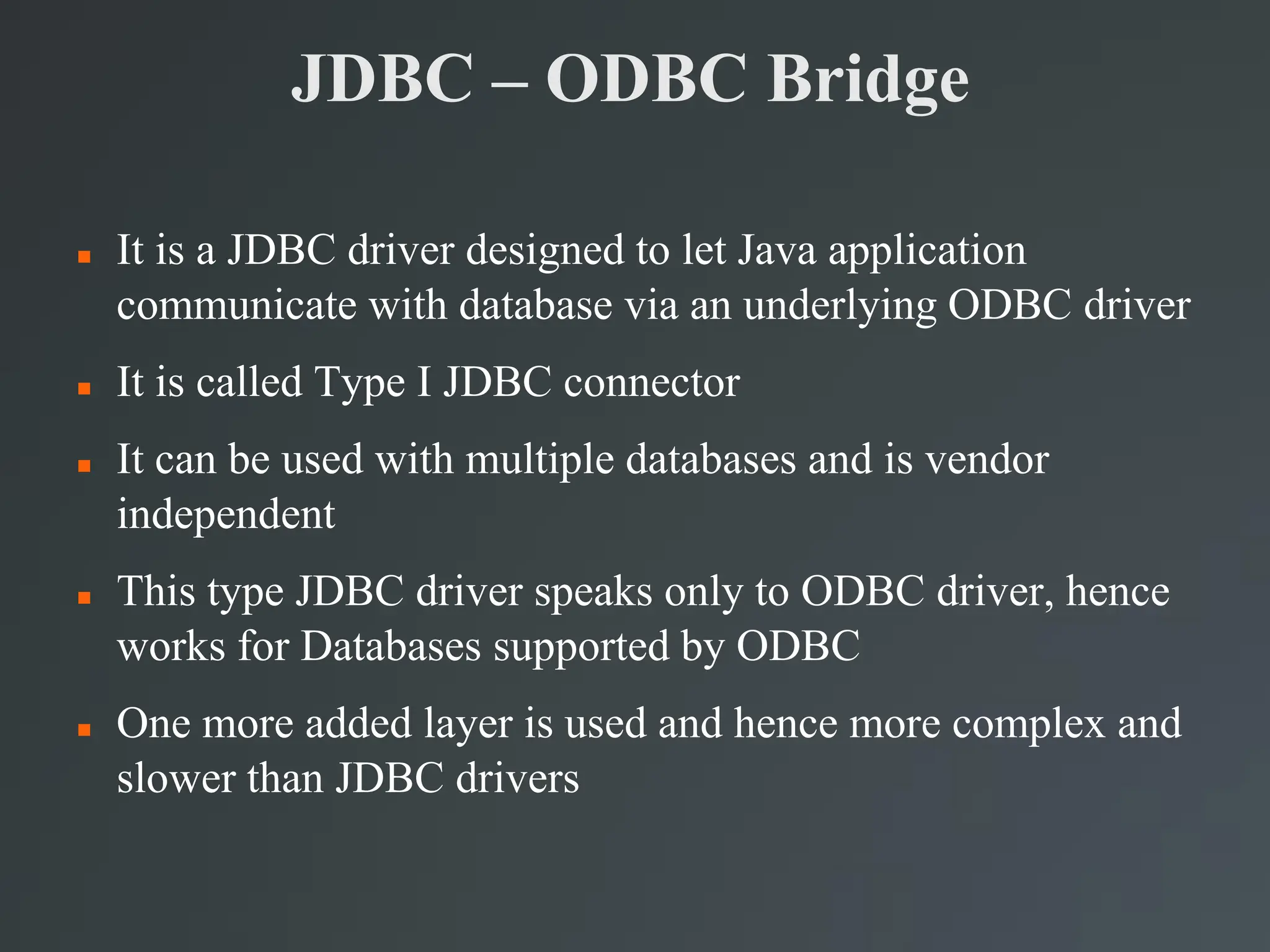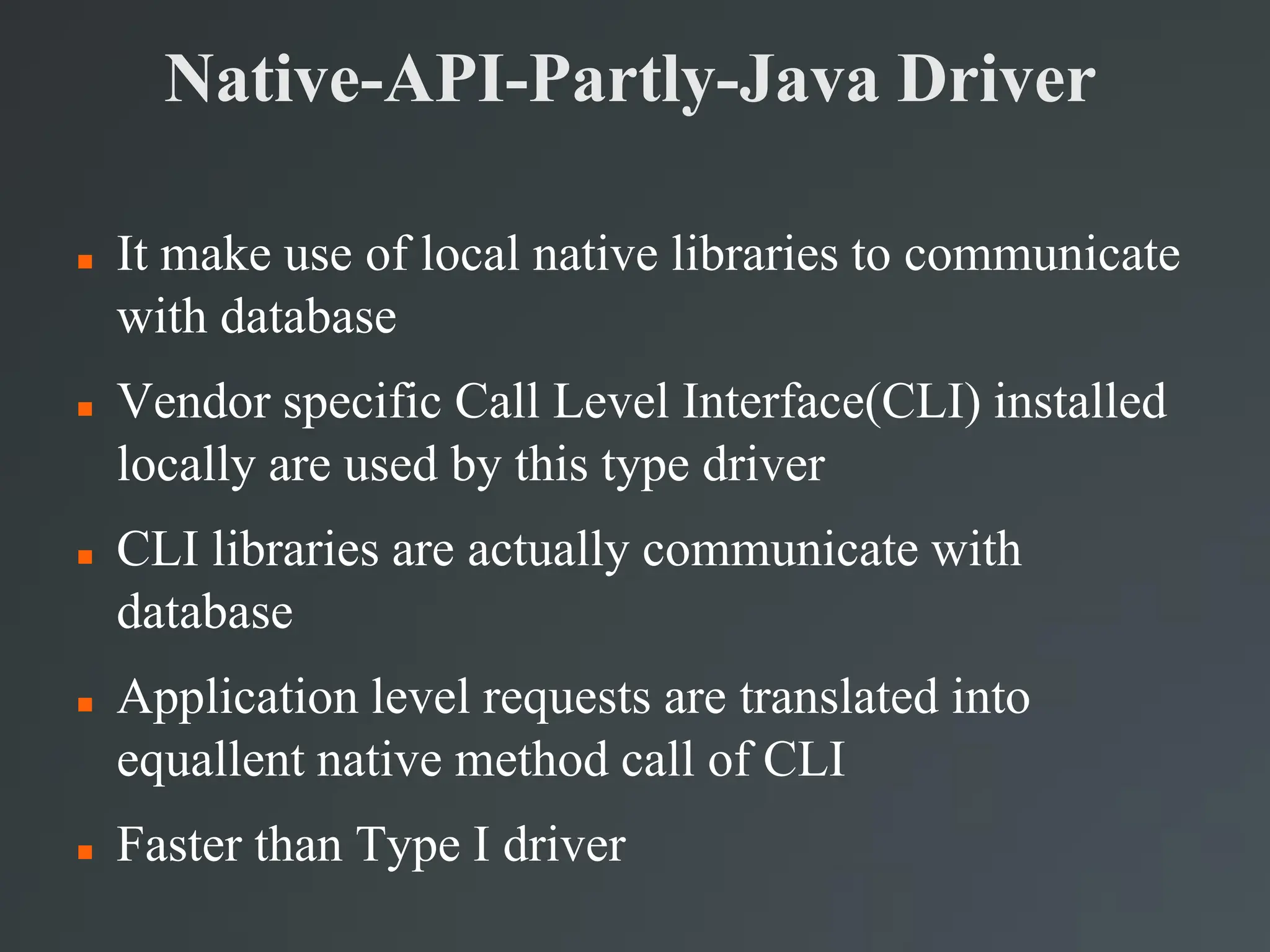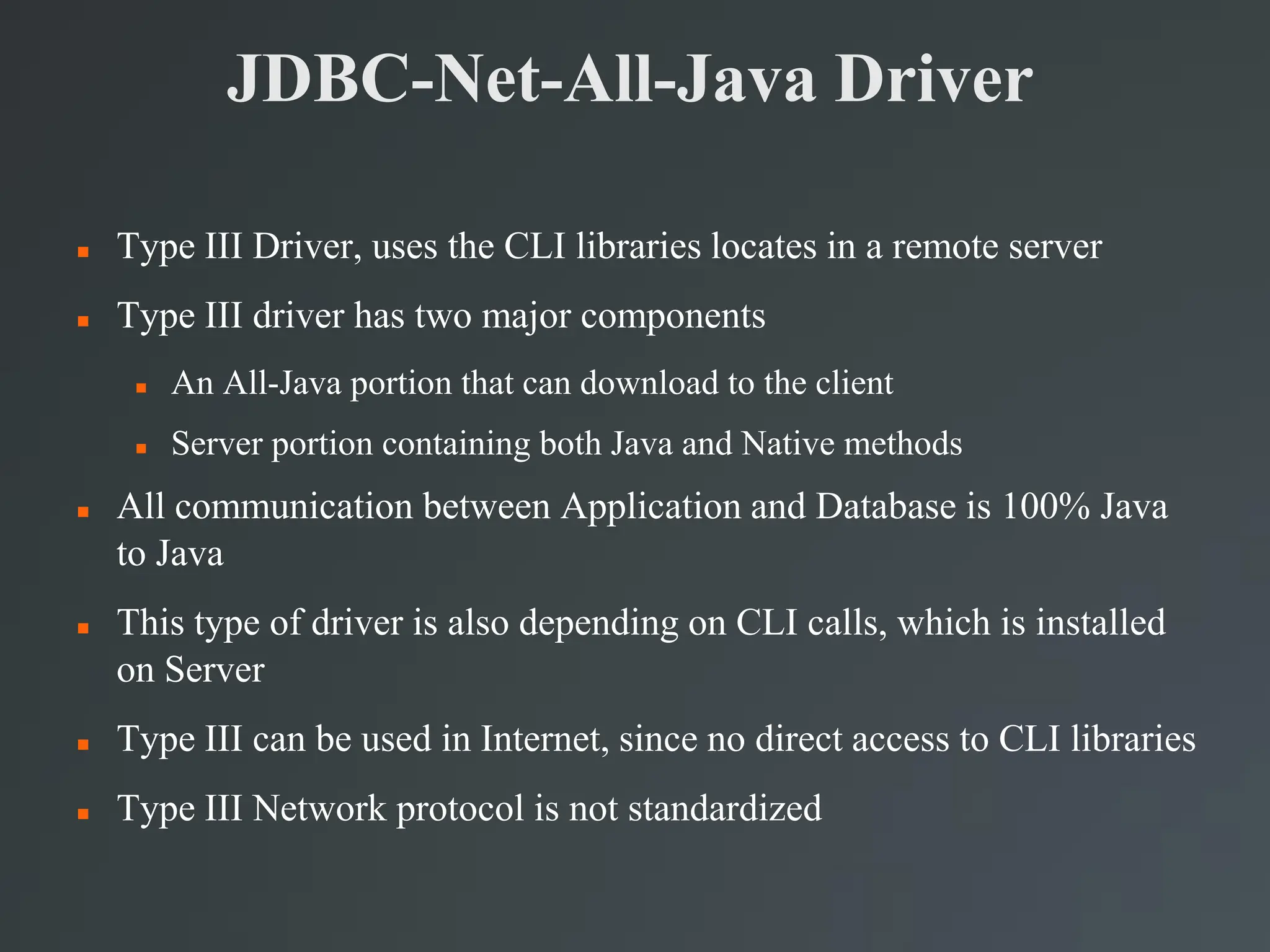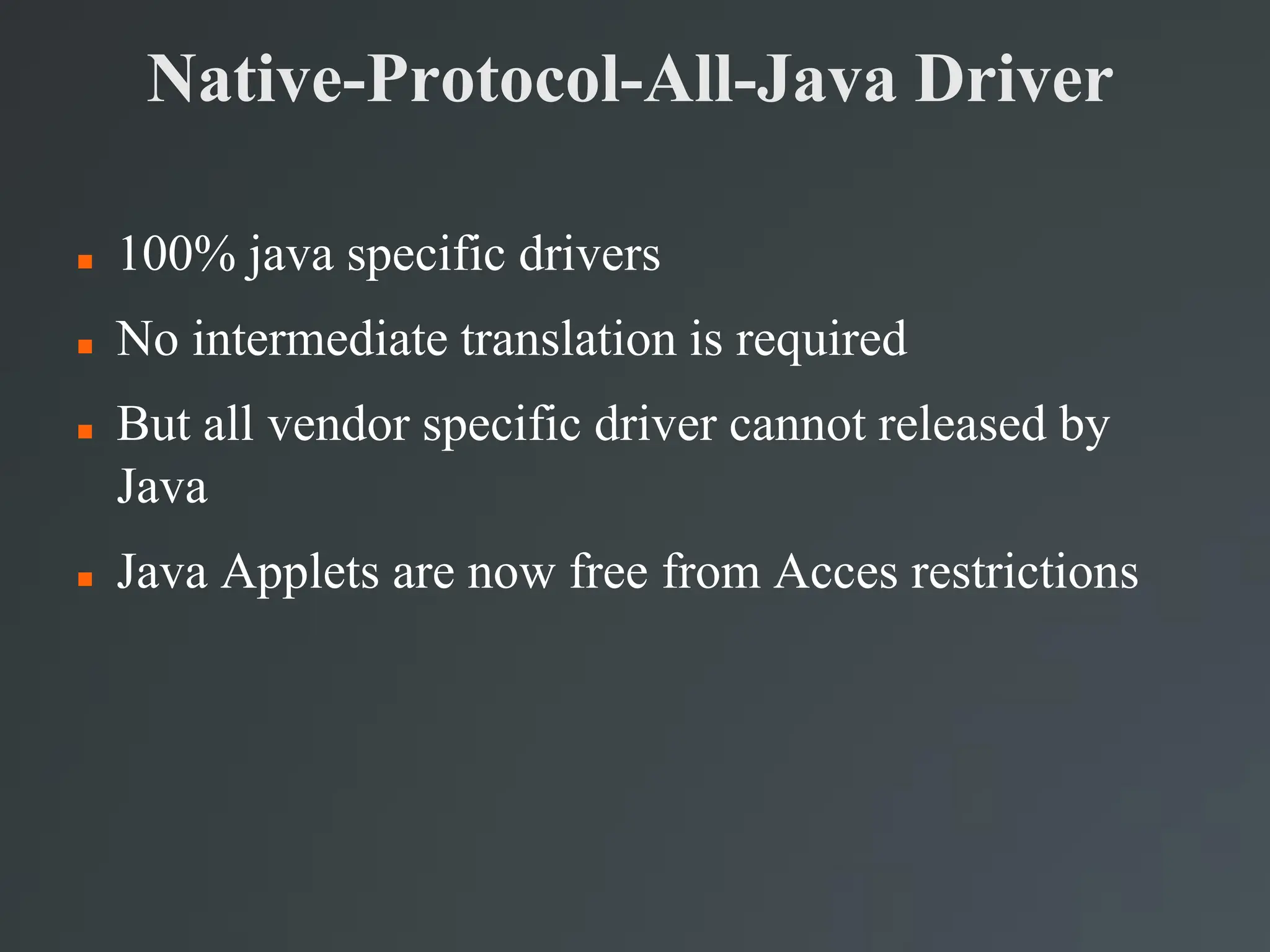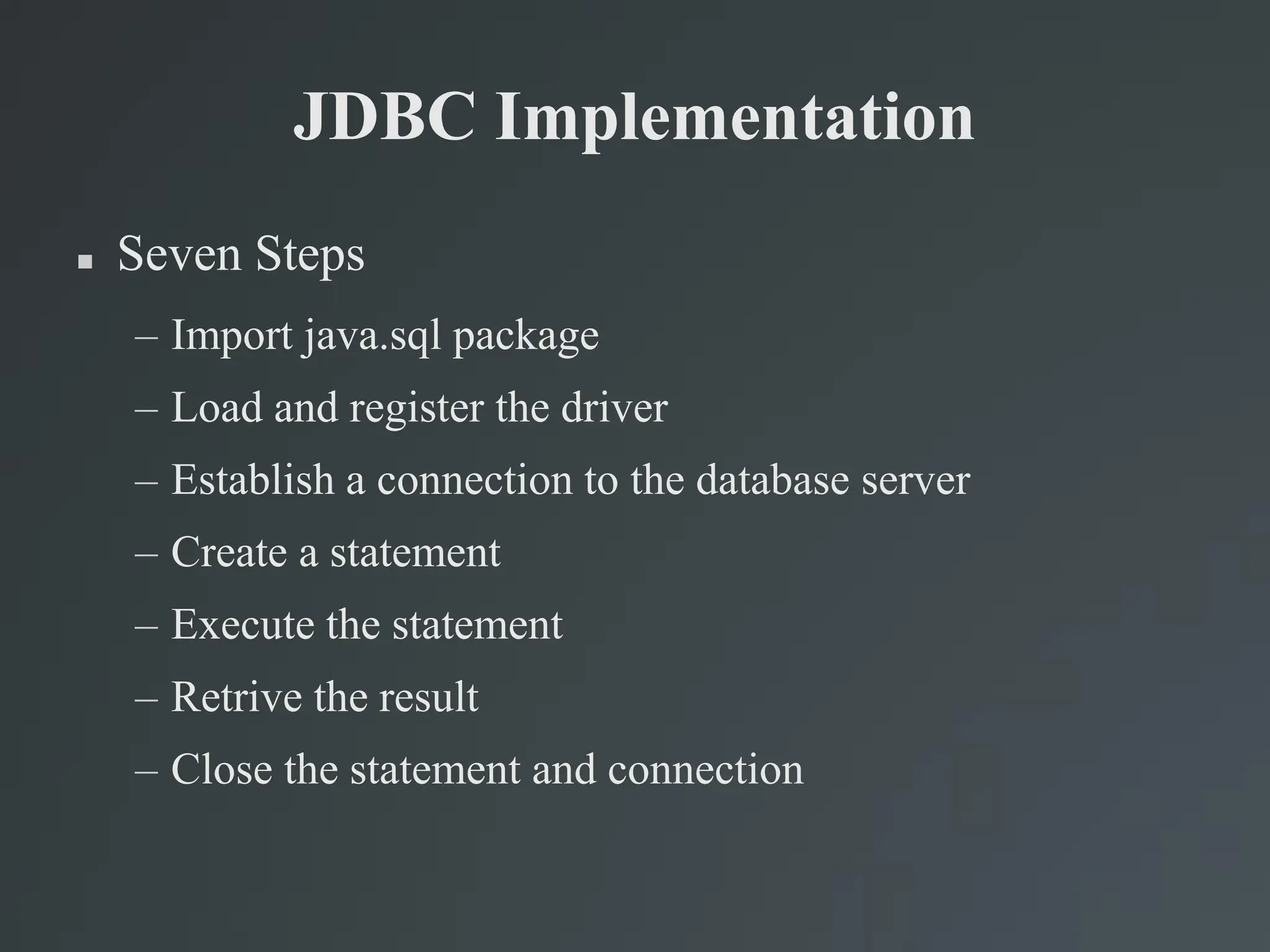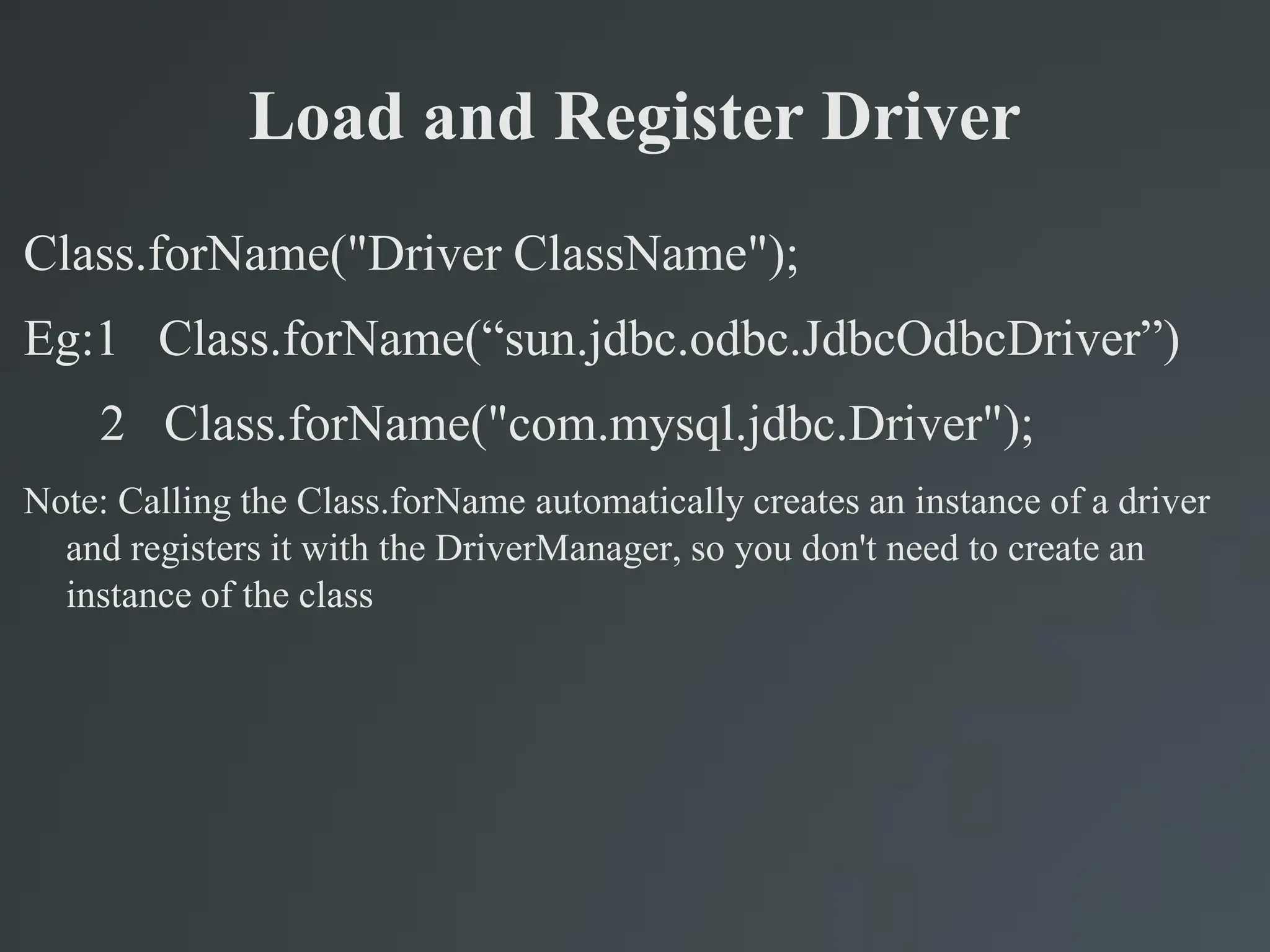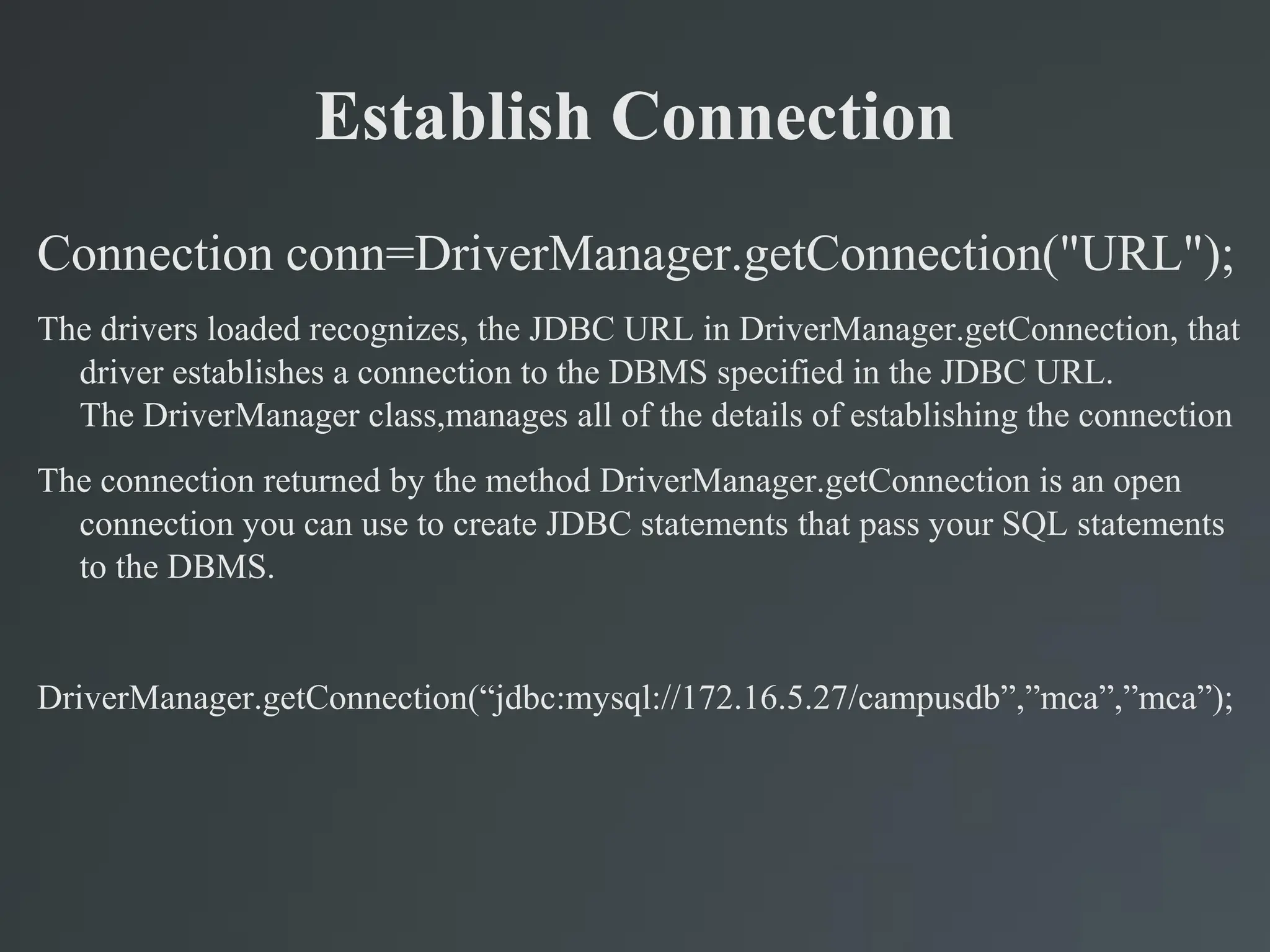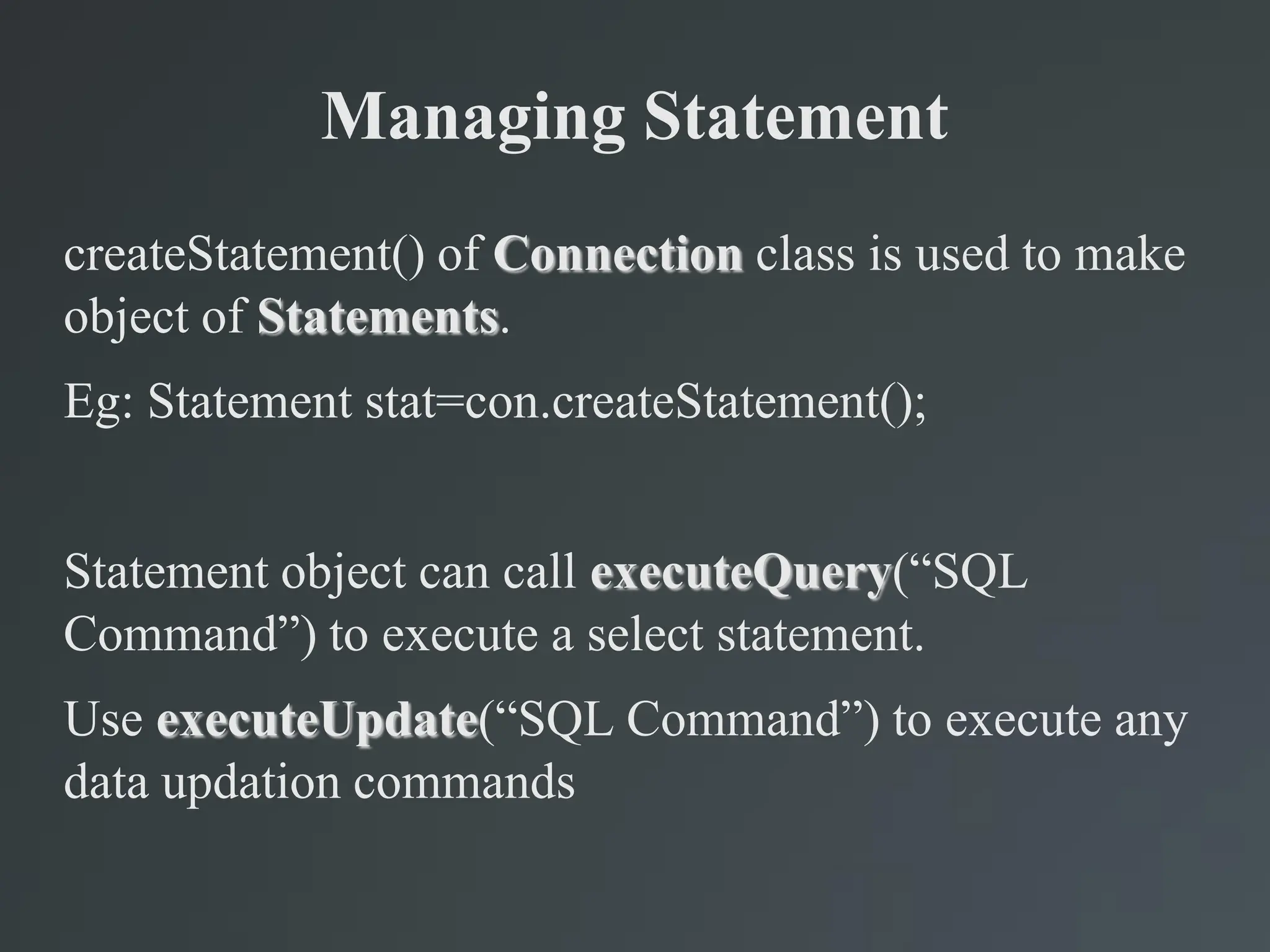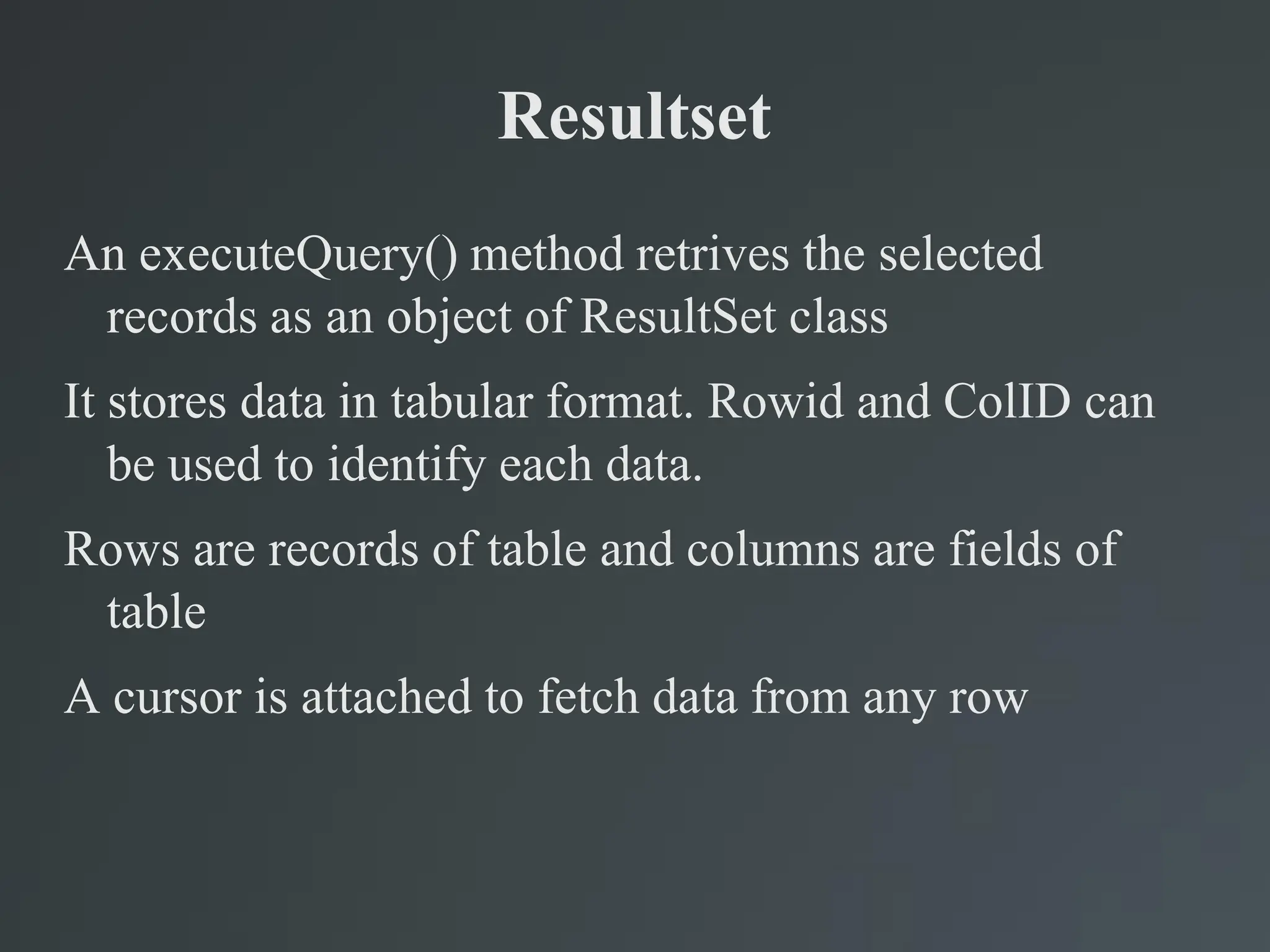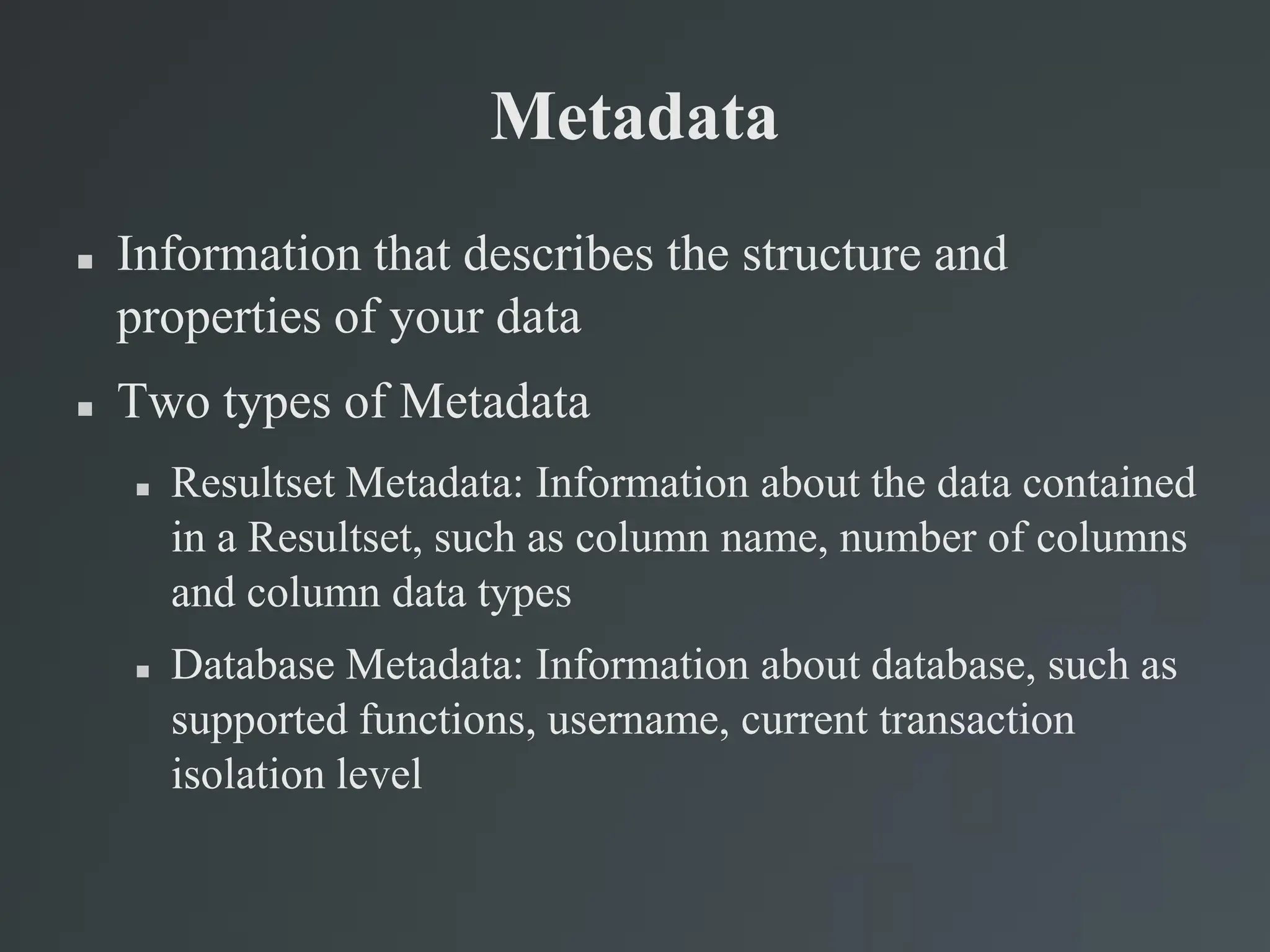JDBC provides an interface between Java programs and databases. It allows Java programs to send SQL statements to a database and retrieve the results. There are different types of JDBC drivers that allow communication with databases using different methods, such as via ODBC or directly using the database's native APIs. The basic steps to use JDBC include loading the appropriate driver, establishing a connection, creating statements to execute queries and updates, processing result sets, and closing connections.
